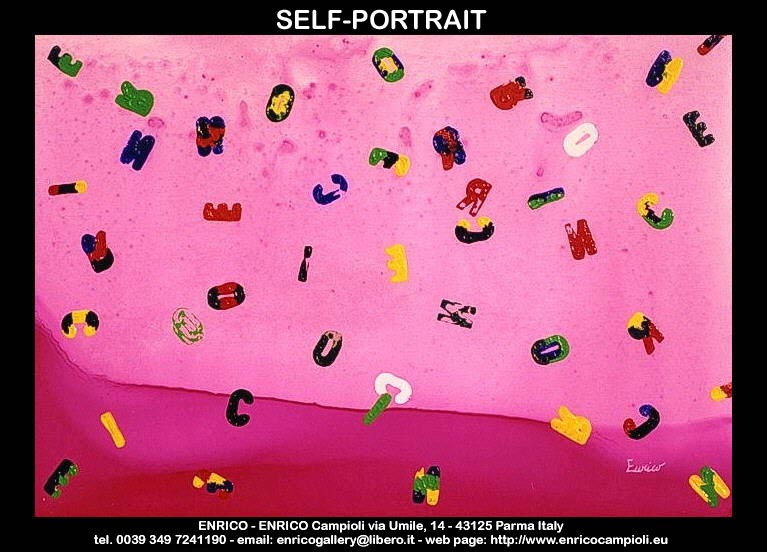ENRICO

PASCAL ETIENNE
The right way to define ENRICO could be master of fantasy. The variety of techniques, of shades of colour, of shapes and, most of all, of ideas contained in the operas of this artist are evidence of the high degree of creativity. Every painting of him is a world to discover rich of multiples levels of meanings, some of them consiously put in and many others let to the infinite depth of the unconscious. The pictorial wood to Campioli is like a window on the fantasy: nearly all his operas give the impression to be a part of world that begins before and ends after the little bounds of the canvas
(Microcosmos
,
The blue kiss,
Sybil just to cite some examples).
The creative game it is developed also in the titles
(Colors in the wind),
with the signature on the opera
(Ego,
Towns), with the conections between paintings
(Men and women,
Women and men)
on a mission of fantasy at three hundred and sixty degrees. Also when the plans are more rational
(New dimensions,
Perspectives,
The rational pleasure)
and conscious
(Eclipse,
Self portrait,
Still life)
the creative diamonds shines of full light. ENRICO it is able to realize operas that are able to wake strong passions, whatever will be sad or joyful. He sonorously comunicates the light
(Caribe)
and the cheerfulness
(Twirlings),
the faith in the future. And what could be more important in today's reality than a stirring breath of happiness? The author opera is a coordinate whole developed in the space of several years of activity. The tousands of creative streams rejoin in an only artistic river on its way to the coloured sea in which the artist has the goal to arrive in his
manifesto, when the aim is the search for beauty. The critic has the hard task to give a judgment also to help the operas users. My point of view is surely good. The goal is get. I think that by admiring the author operas one by one and as whole
it is always visible on the horizon the sea of "beauty".
by Etienne Pascal



The right way to define ENRICO could be master of fantasy. The variety of techniques, of shades of colour, of shapes and, most of all, of ideas contained in the operas of this artist are evidence of the high degree of creativity. Every painting of him is a world to discover rich of multiples levels of meanings, some of them consiously put in and many others let to the infinite depth of the unconscious. The pictorial wood to Campioli is like a window on the fantasy: nearly all his operas give the impression to be a part of world that begins before and ends after the little bounds of the canvas (Microcosmos
, The blue kiss, Sybil just to cite some examples). The creative game it is developed also in the titles (Colors in the wind), with the signature on the opera (Ego, Towns), with the conections between paintings (Men and women, Women and men) on a mission of fantasy at three hundred and sixty degrees. Also when the plans are more rational (New dimensions, Perspectives, The rational pleasure) and conscious (Eclipse, Self portrait, Still life) the creative diamonds shines of full light. ENRICO it is able to realize operas that are able to wake strong passions, whatever will be sad or joyful. He sonorously comunicates the light (Caribe) and the cheerfulness (Twirlings), the faith in the future. And what could be more important in today's reality than a stirring breath of happiness? The author opera is a coordinate whole developed in the space of several years of activity. The tousands of creative streams rejoin in an only artistic river on its way to the coloured sea in which the artist has the goal to arrive in his manifesto, when the aim is the search for beauty. The critic has the hard task to give a judgment also to help the operas users. My point of view is surely good. The goal is get. I think that by admiring the author operas one by one and as whole it is always visible on the horizon the sea of "beauty".by Etienne Pascal